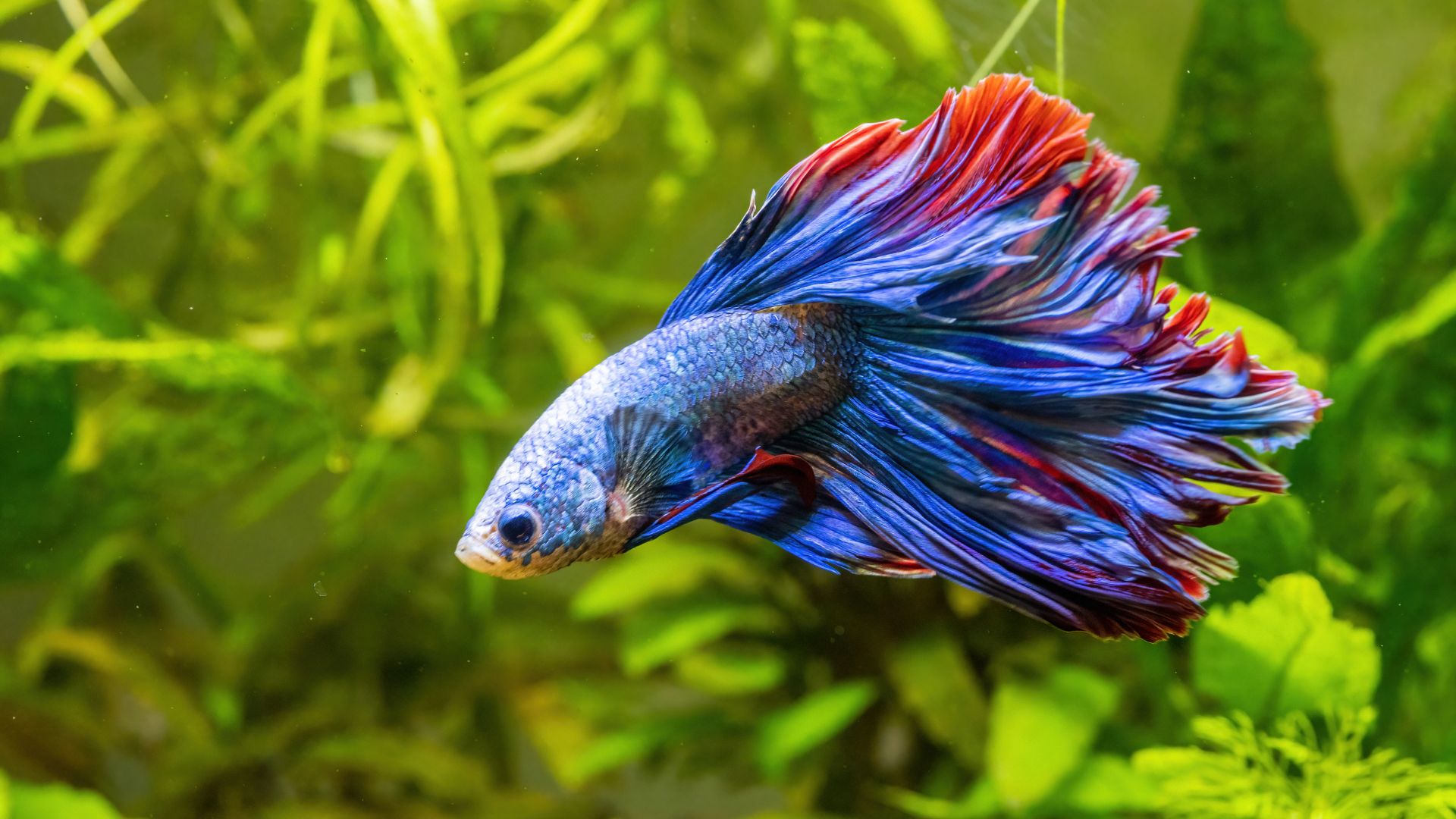
Adding colorful tropical fish to your aquarium is a no-brainer if you love being mesmerized by beautiful colors and patterns. Many people, when they hear the word ‘fish’ think of dull grey fish or the classic ‘gold’, that’s actually orange, goldfish. But there is a variety of freshwater fish boasting gorgeously bold scales.
If you’re thinking of starting up a feature tank or you’re just really fascinated by exotic-looking fish then you’re going to want to invest in one of the best tropical fish tanks – and you’ll want to know how to clean a fish tank with one of the best fish tank cleaners. Our list below of pretty fish will help point you in the right direction of what style tank will suit your fish friends best. Details such as their diets, personality traits, and lifespan will help you figure out which colorful tropical fish suits you best.
Although fish aren’t like owning a dog where you have to take them out for regular walks, fish aren’t necessarily ‘low maintenance’ animals to keep as pets. A clean tank is essential for creating the right environment for your fish but it’s not the most glamorous task for a fish parent to take on. You’ll also need to invest in the right food for your fish breeds. We’ll look at how you can enrich your fish's environment later.
While you ponder if you could commit to owning your own small aquarium, take a look at what colorful tropical fish are out there.
Colorful tropical fish for your tank
1. Cherry barb

Puntius titteya
Class: Actinopterygii
Water: Fresh
Diet: Omnivore
Lifespan: 2-10 years
Cherry barbs are great fish for beginners, as they are quite hardy. You'll need to get more than one cherry barb, as they're a schooling-type fish and will move around a lot together in the tank. Otherwise, they may hide and become shy. Make sure that your ratio of males to females is correct – male cherry barbs are quite aggressive during mating season, so don't let them outnumber the females. The ratio should be one male to every two females. Cherry barbs like heavily planted tanks, with low light, and an aquarium temperature around 75°F (24°C).
2. Neon tetra
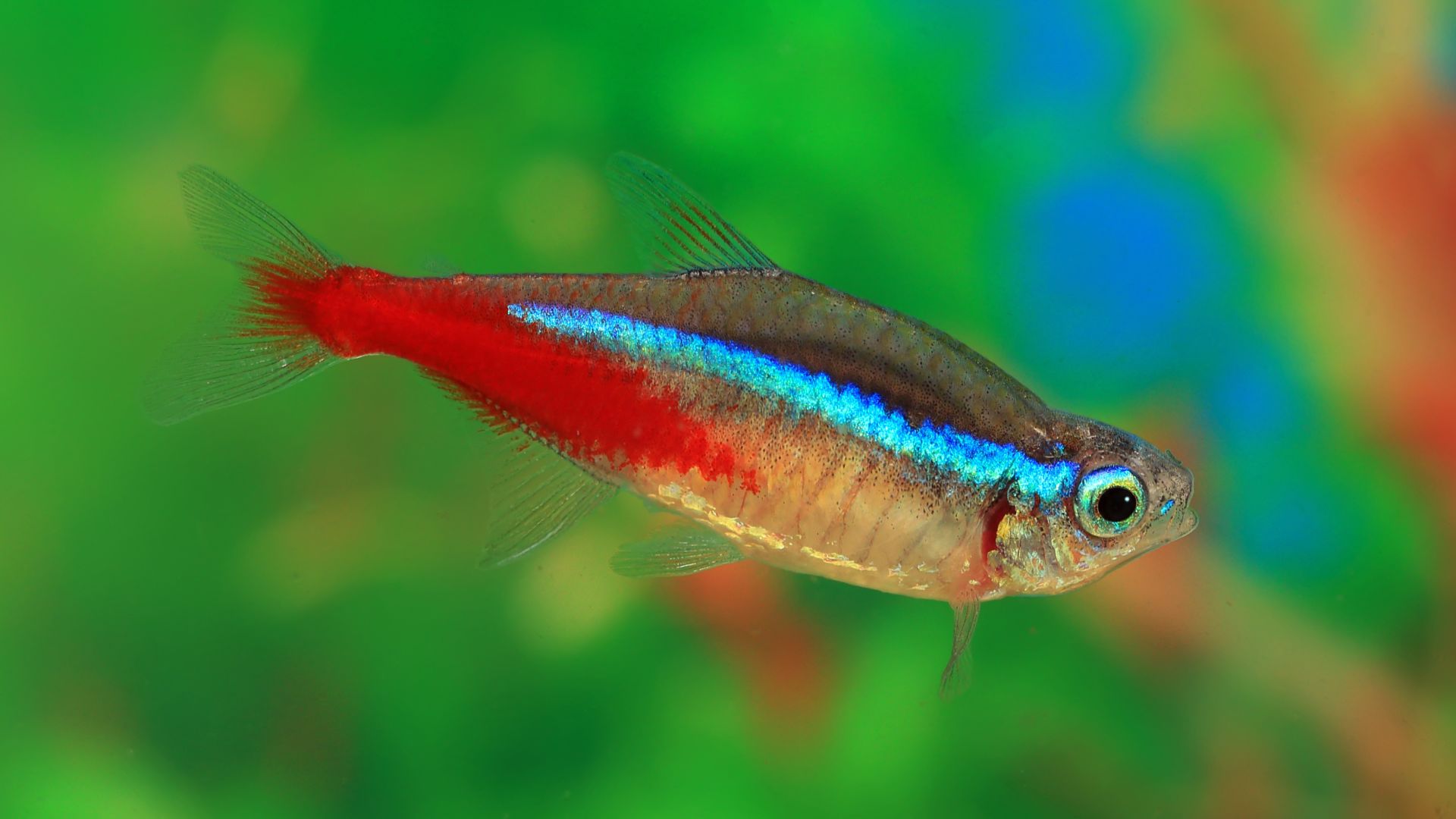
Paracheirodon innesi
Class: Actinopterygii
Water: Fresh
Diet: Omnivore
Lifespan: Up to 5 years
Neon tetras can live in a freshwater tropical aquarium, and their bright blue and red colorway will liven up your tank. Native to South America, they live in murky water and need to be bright in order to help keep track of eachother. They are a breed of fish who normally travels in schools of 10-15, so keep that in mind, and they don't do well with larger, aggressive fish as they're so small.
3. Discus
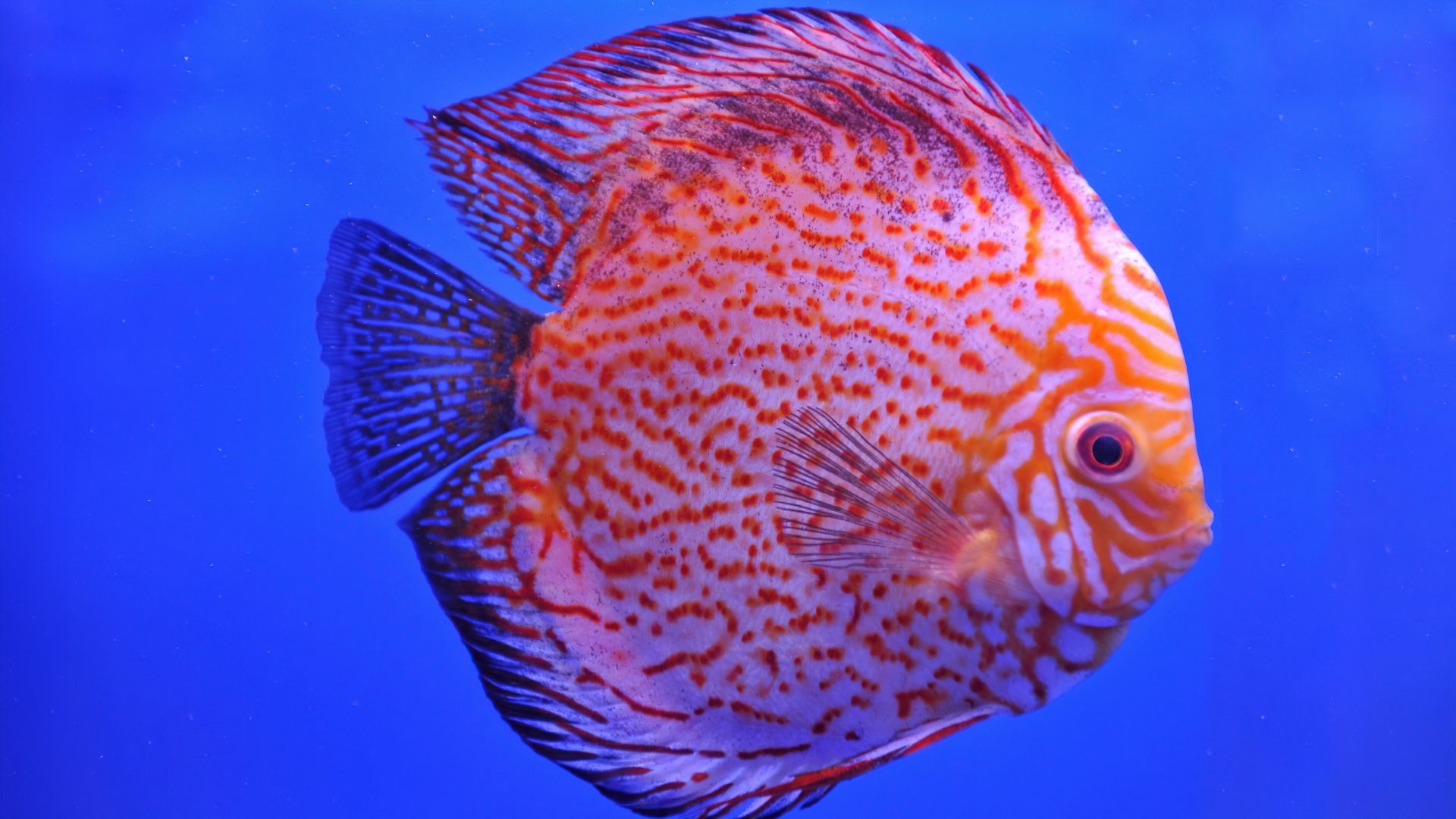
Symphysodon
Class: Actinopterygii
Water: Fresh
Diet: Omnivore
Lifespan: 10-15 years
Discus are beautifully regal and bright, and there are several species of them. They can grow to be quite big, so it's recommended that you have at least a 75-gallon aquarium – tall ones are best for their body shape, as they can grow quite tall.
They are calm and peaceful but can be aggressive towards each other during spawning. If they become bullies, you'd have to remove the more submissive fish as discus are so large and could injure them. They are freshwater fish that prefer water around 82–86°F, with broadleaf plants and driftwood to mimic the flooded forests from which they're from.
4. Paradise fish
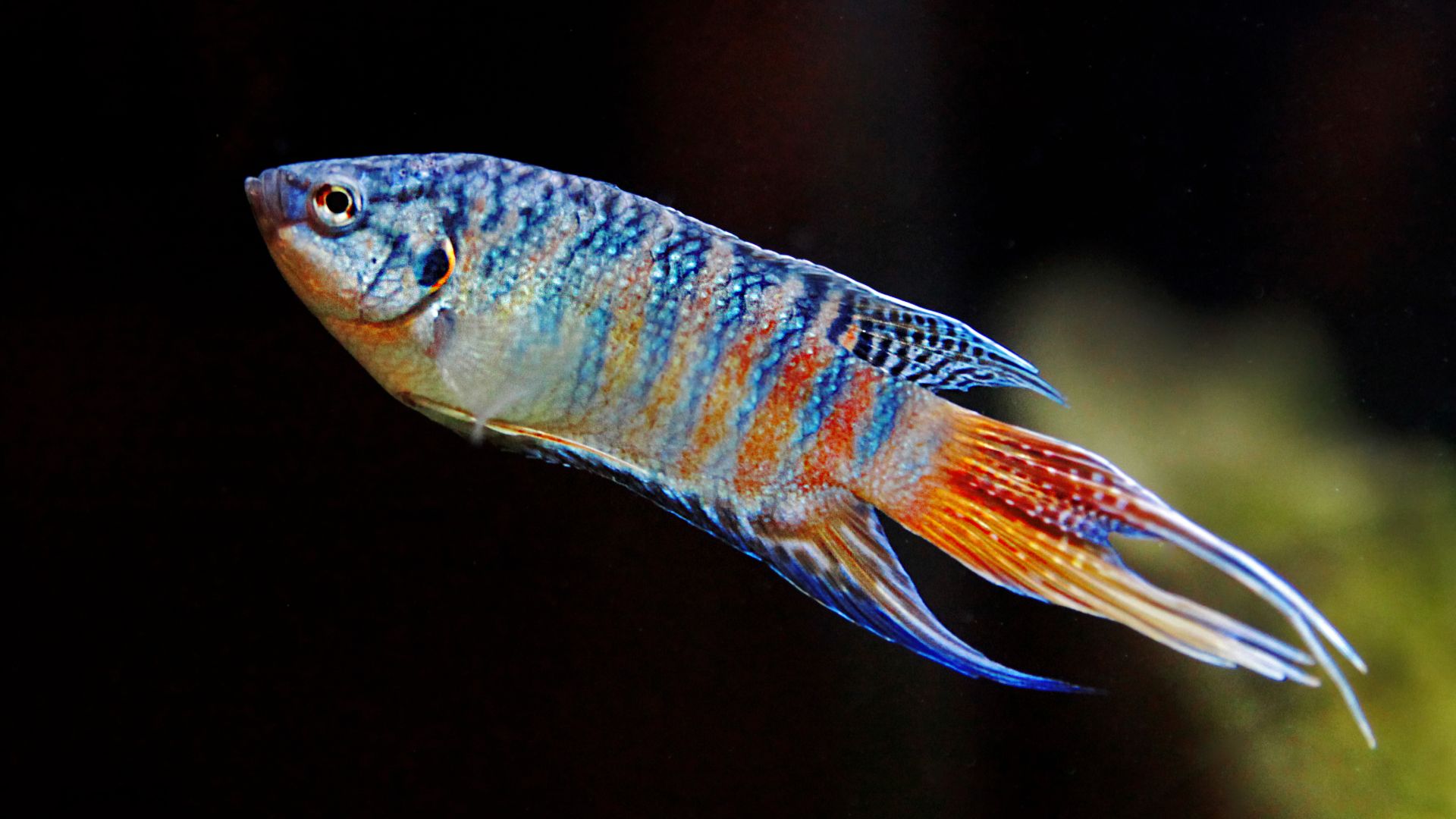
Macropodus opercularis
Class: Actinopterygii
Water: Fresh
Diet: Omnivore
Lifespan: 8-10 years
Paradise fish are freshwater fish that can be a bit aggressive, so you'll only want to introduce them to your tank if you're a veteran fish owner. These colourful tropical fish are considered to be very active, and are usually only aggressive to their own species, but not always.
Paradise fish can usually be found closer to the top of the water in the tank, as these fish have an organ that lets them breathe air! They like a warm tank between 70–80°F with plenty of plants.
5. Betta fish
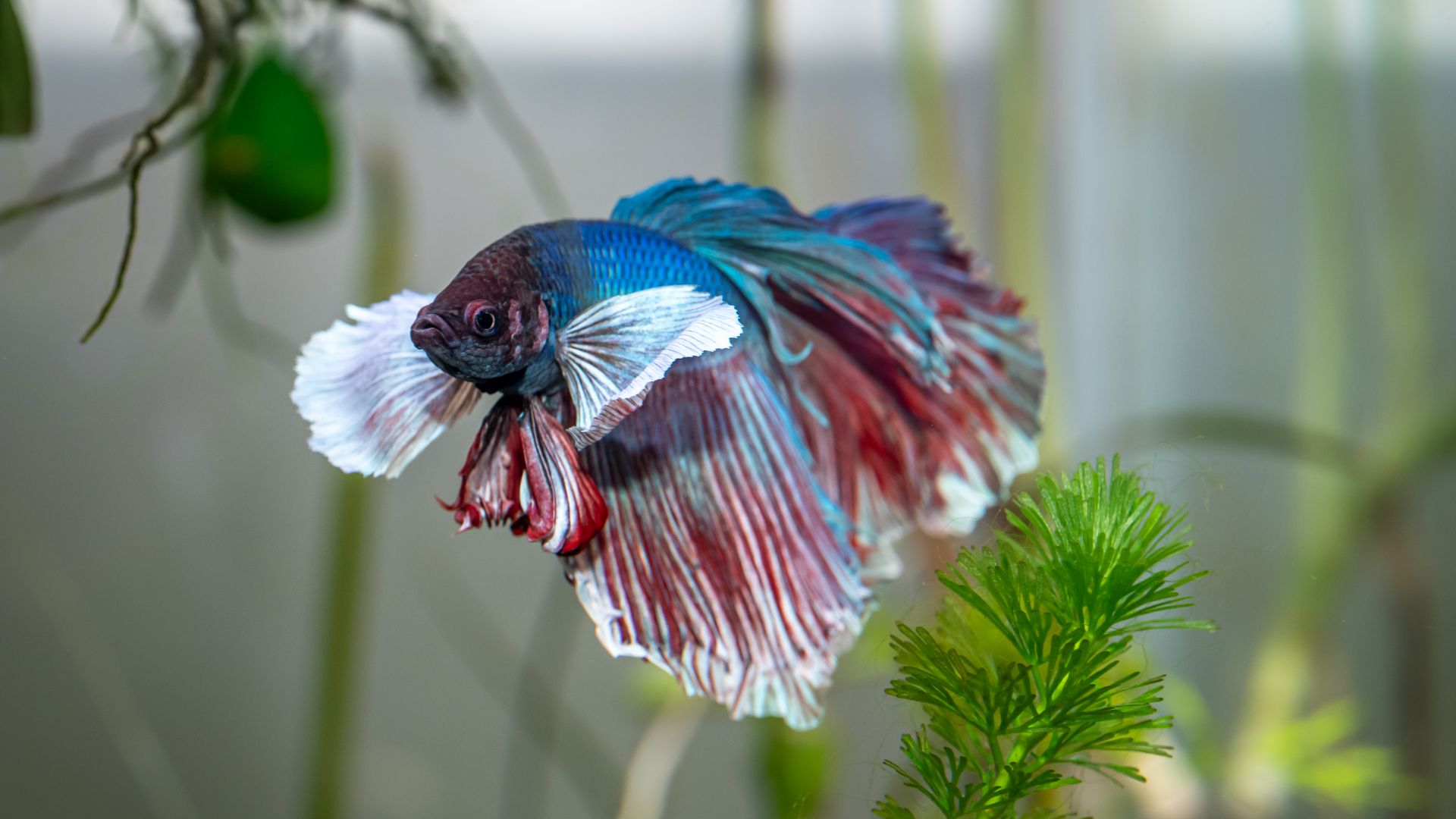
Betta splendens
Class: Actinopterygii
Water: Fresh
Diet: Carnivore
Lifespan: Up to 3 years
Betta fish are an iconic colorful tropical fish, and very popular home aquariums. They're brightly colored, energetic, and have beautiful flowing fins. These freshwater fish are from Southeast Asia, and have grown in popularity over the last several years. However, they aren't as easy to look after as some may think and are notoriously mistreated in the fish industry. As such, you'll want to be somewhat experienced before you add them to your tank and read up on how to care for betta fish.
Betta fish can be aggressive, especially males, so choose their tankmates carefully – they aren't fond of other aggressive fish, or ones that are particularly right in color. They’re often kept on their own and as long as they’ve got plenty of enrichment you don’t need to worry too much about whether betta fish get lonely. They enjoy hiding and exploring in their tanks, which should be full of warm water, and they thrive in larger tanks.
6. Flowerhorn Cichlid

Amphilophus labiatus
Class: Actinopterygii
Water: Fresh
Diet: Omnivore
Lifespan: 10-12 years
These striking freshwater fish are so unusual-looking and bright that they're a popular fish choice for home aquarium owners despite their aggressive nature. Flowerhorn Cichlids need to be in a tank with at least one other of the same species, and can be a bit expensive (between $40–80), so you'll want to consider that when choosing your fish.
They can bite and chase other fish species, although they move quite slowly due to their large bodies. The breed loves to claim territories in nooks and crannies in rocks or caves, so make sure their tank includes that, and they need a very large tank due to their size – around 150 gallons for two of them.
7. Angelfish
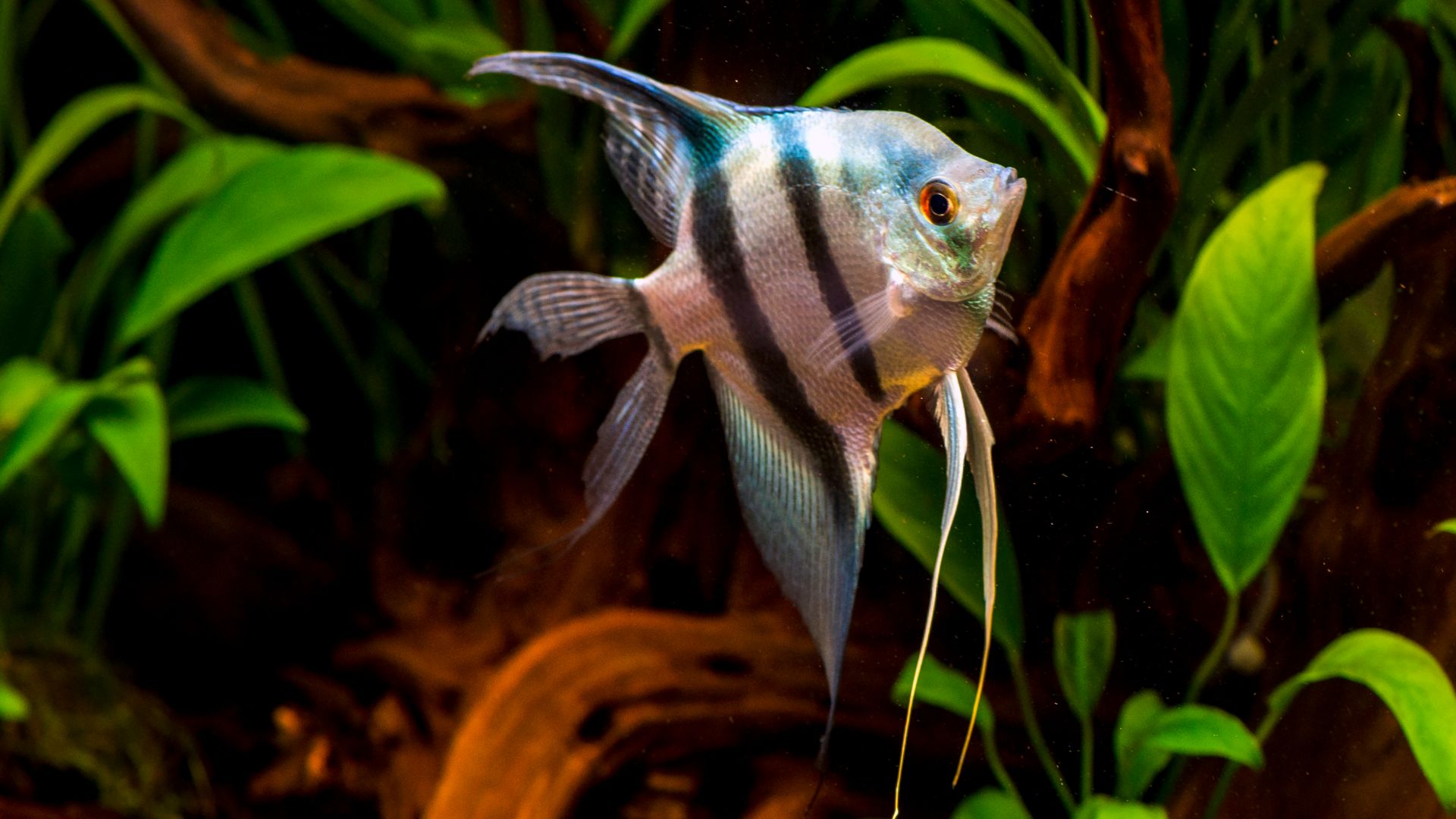
Pterophyllum
Class: Actinopterygii
Water: Type dependent
Diet: Omnivore
Lifespan: 10 years
Angelfish are beautiful fish, with flat bodies and long, elegant fins that resemble angel wings (these are very delicate, so avoid sharp-edged objects in any tank that has angelfish in it). These flatwater fish prefer calmer waters, so they won't fit in well if you have a filtration system in your tank that kicks up a current. They are peaceful fish who enjoy being with a few of their own, so you'll need to ensure you have enough space for them to grow and thrive. They prefer warm, tropical water tanks with standard lighting.
8. Clownfish
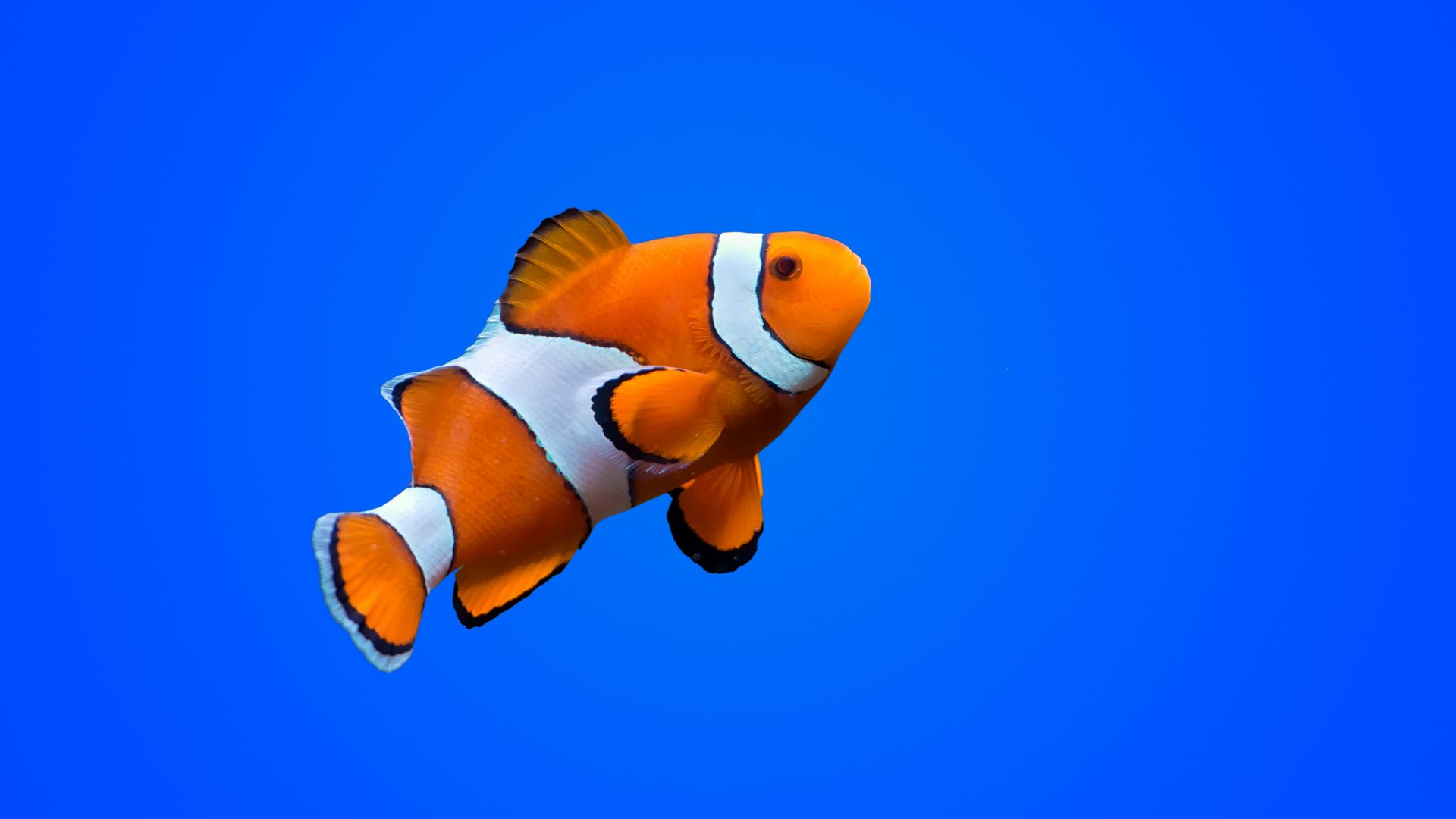
Amphiprion ocellaris
Class: Actinopterygii
Water: Salt
Diet: Omnivore
Lifespan: 3-5 years
You know these fish well thanks to Finding Nemo. The clownfish is a popular reef fish that is a great fit for tropical tanks – but these are saltwater fish, so they require more effort than the other freshwater fish on this list.
Clownfish are peaceful fish, but they are aggressive towards other species of clownfish (of which there are at least 30), so make sure you only have one clownfish species in your tank. They are weak swimmers and need to have places to hide and feed, and you'll need your tank to have anemones in it to support them, which are harder to keep than the fish themselves. Anemones require specific lighting, a large tank, and water between 74 and 80°F.
9. Blue Tang
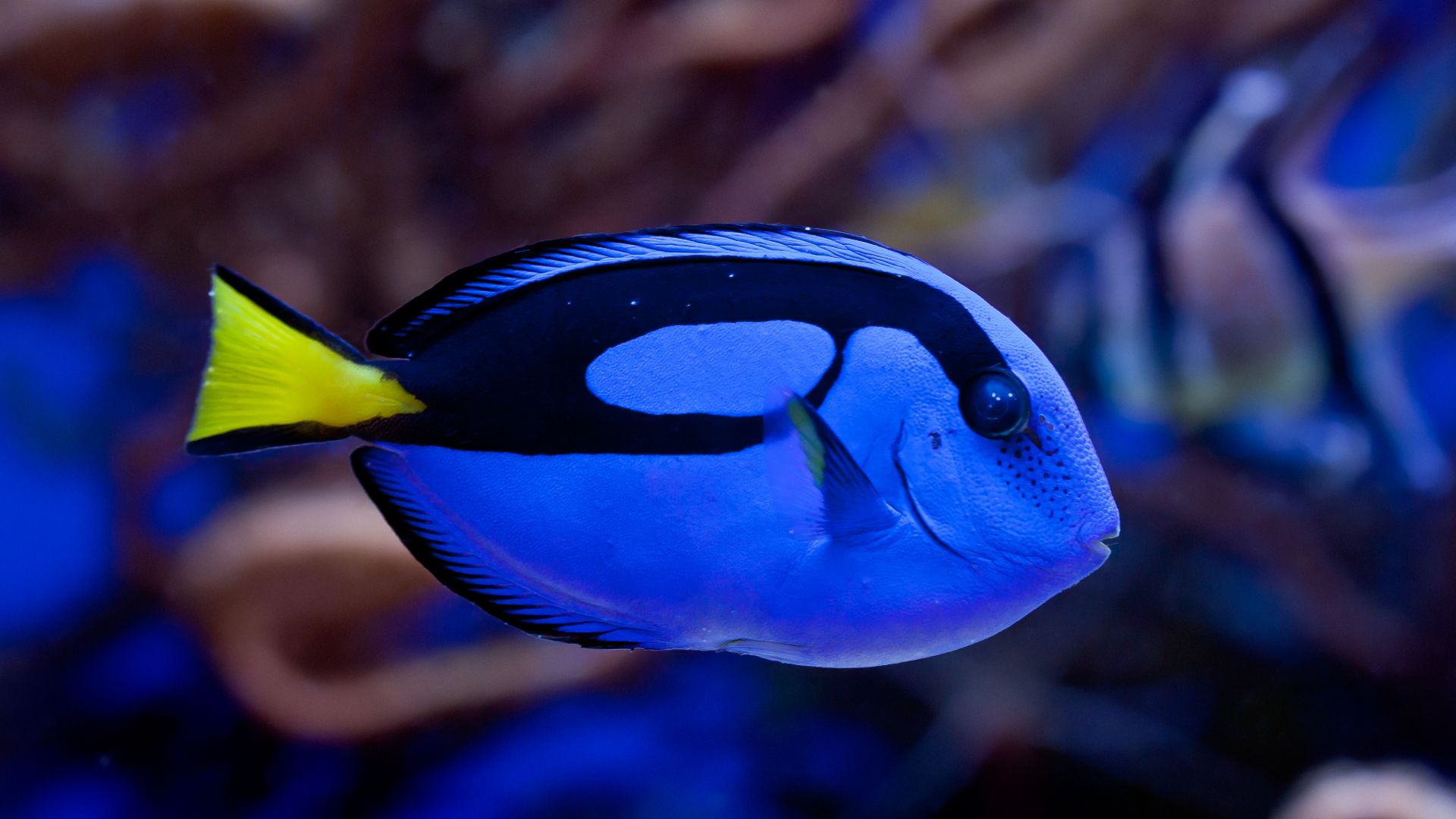
Paracanthurus
Class: Actinopterygii
Water: Salt
Diet: Omnivore
Lifespan: 8-20 years
And after Nemo comes Dory, a blue tang with stunningly neon blue and yellow coloring. They have very specific tank requirements, are prone to skin diseases, and can be aggressive to other fish. Blue tangs need space as they are very active, but they also enjoy darting in and out of rocks, so the tank will need to be big enough to accommodate that.
They can be fairly well-behaved with other fish, but can get aggressive with other species of tang. They are saltwater fish that need tank temperatures of around 82°F.
10. Endler's
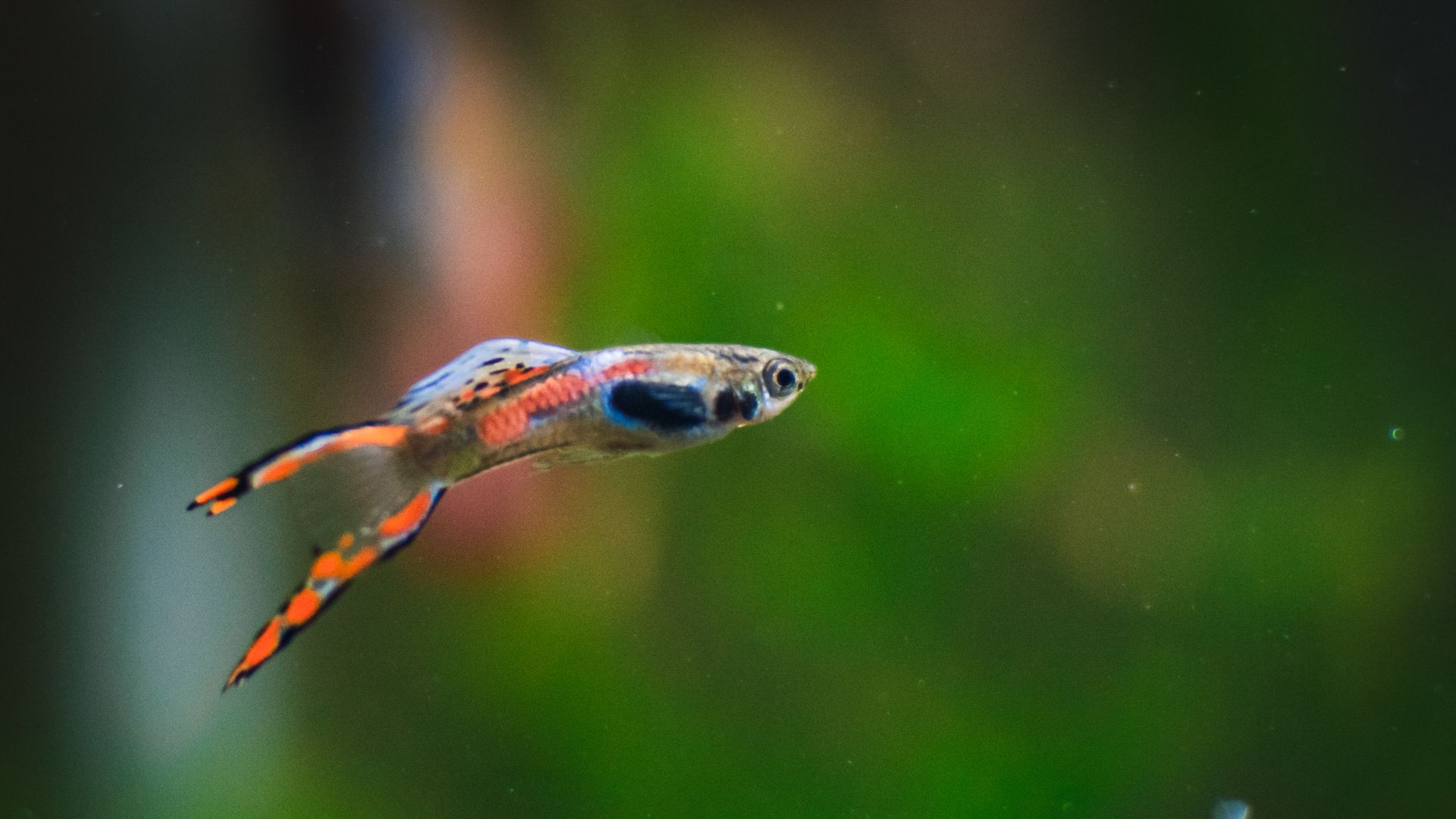
Poecilia wingei
Class: Actinopterygii
Water: Fresh
Diet: Omnivore
Lifespan: 2-3 years
Endler's or Endler's livebearer, are tiny and vibrant freshwater fish that are pretty easy to care for. They look like colorful guppies, and have psychedelic patterns that will add some trippy vibes to your tank. Endler's don't need a very big tank – a 20-gallon is more than enough for around four of them, but you'll have to increase the size if you add more fish.
They like high pH water, can tolerate a pretty wide range of temperatures (between 64–84°F), and need live plants as they provide both food and shelter.
How can I provide enrichment to my colorful tropical fish?
Companion animal vet Dr Rebecca MacMillan warns against being lulled into thinking fish are super-easy pets.
“Certainly, compared to other animals like dogs or rabbits, tropical fish could be considered pretty low-maintenance,” she explains. “After all, they don’t need exercising, grooming, or regular vet trips! However, this doesn’t mean we should be complacent about the needs of our fishy friends. It is important that we strive to give them the best quality of life possible, with a well-cared-for aquarium and varied diet.”
The best fish foods go beyond pellets and flakes.
“Offering a variety of different food types appropriate for the species of your fish will help with their mental well-being as well as their physical health,” continues Dr MacMillan. “As a fellow fish enthusiast, I know that freeze-dried or frozen insects usually go down well, in addition to their usual flakes or pellets.
“Some fish may also enjoy nibbling on bits of fruit or veg occasionally. Rotating different food types can help to prevent boredom. Slow feeders are also worth considering so that your fish can graze on and off rather than having one or two frenzied sessions a day.”
According to Dr MacMillan, the best way to provide enrichment for tropical fish is to mimic their natural environment as much as possible. “This means providing plenty of real plants, hiding places, and other structures within a decent-sized tank.”
Enrichment also means varying up the kinds of structures and toys at your fish’s disposal. “It is possible to purchase interactive toys that some fish might find stimulating,” she adds. “Floating toys or balls can provide interest, as can bubble-releasing toys. Features for the tank like shipwrecks and ornamental rocks can be added and changed every month or so to keep things fresh and interesting.”
Finally, it’s not just about what’s in your tank, but also who. “Making sure that the social needs of your fish are also met is important to their mental well-being,” says Dr MacMillan. “For example, shoaling species should always be kept in groups which will help to keep them stimulated and display natural behaviours.”
If any of these colorful tropical fish has taken your fancy, don’t forget to check out the best fish tank decorations. Not only do these provide the perfect living environment for your fish but they also add even more flair to your already exotically decked-out aquarium.
Are you a novice fish keeper keen to learn more? Check out the best types of fish for first time fish owners and tips for taking care of fish.







